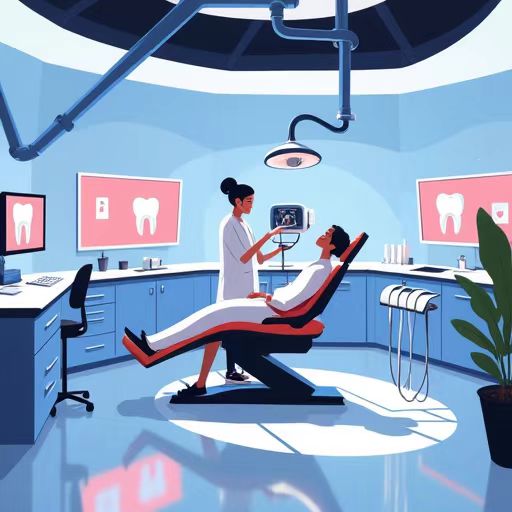The dental industry has experienced significant transformations in recent years,driven by technological advancements,changing patient expectations,and evolving market dynamics.As we look ahead,the integration of digital tools and innovative practices promises to reshape how dental care is delivered and perceived.
Technological Innovations at the Forefront
The digital revolution has become a cornerstone of modern dentistry,with technologies such as artificial intelligence(AI),3D printing,and CAD/CAM systems leading the charge.AI is enhancing diagnostic accuracy by analyzing radiographs and intraoral images with unprecedented precision.This technology not only identifies issues early but also aids in treatment planning,making care more personalized and efficient.
3D printing has also revolutionized dental prosthetics and restorations.Practices can now produce crowns,implants,and other devices in-house,significantly reducing turnaround times and improving patient satisfaction.The ability to create same-day restorations is a game-changer,offering patients quicker and more convenient solutions.
Patient-Centric Care and Experience
The dental industry is increasingly focusing on patient-centric care,driven by evolving expectations and technological capabilities.Patients today demand seamless,personalized experiences,from easy online booking and secure communication to minimally invasive treatments.Teledentistry has emerged as a key tool,allowing virtual consultations,remote monitoring,and even AI-driven virtual assistants to guide patients through basic oral hygiene instructions.
Moreover,practices are leveraging digital smile design and augmented reality(AR)to help patients visualize treatment outcomes before procedures begin.This not only enhances patient satisfaction but also builds trust and engagement.
Market Dynamics and Sustainability
The global digital dentistry market is projected to grow from USD 7.2 billion in 2023 to USD 12.2 billion by 2028,with a compound annual growth rate(CAGR)of 10.9%.This growth is fueled by the increasing adoption of digital tools and the rising demand for precision and efficiency in dental care.
However,the industry is also facing challenges related to sustainability.The energy consumption of technologies like AI requires careful consideration,as practices strive to balance innovation with eco-conscious practices.
The Role of Education and Training
As technology continues to advance,the importance of education and training in the dental industry cannot be overstated.Dental professionals must stay updated on the latest innovations to provide high-quality care and remain competitive.This includes regular training on new equipment,cross-skilling to build versatile skill sets,and continuous education in patient-centric care.
Cosmetic Dentistry:A Growing Segment
Cosmetic dentistry is one of the fastest-growing segments in the industry,with a projected annual growth rate of 7.1%.Innovations such as digital smile design,minimally invasive procedures,and advanced materials are making cosmetic treatments more accessible and effective.Patients can now visualize their future smiles using digital simulations,ensuring satisfaction before treatment begins.
Conclusion
The future of the dental industry is bright,with technological advancements promising to make care more precise,accessible,and patient-friendly.As practices embrace AI,3D printing,and other digital tools,they must also prioritize sustainability and education to thrive in this evolving landscape.By focusing on patient-centric care and staying ahead of technological trends,the dental industry will continue to redefine the standards of oral health and well-being.


